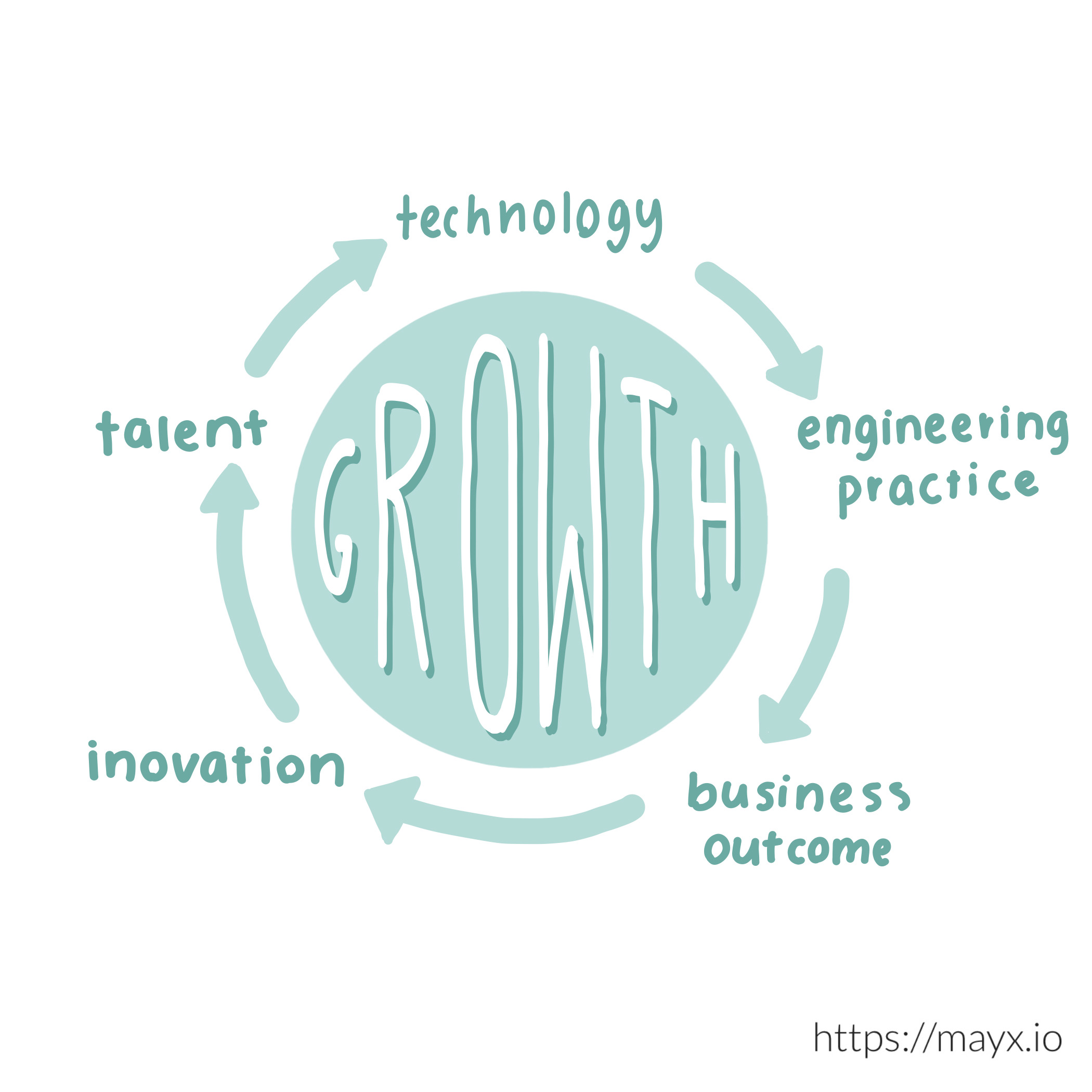
The Technology Growth Flywheel
Amazon’s Flywheel
In 2001 Jim Collins coined the word ““flywheel effect” to describe Amazon’s business growth framework, which Bezos is used to help his company grow. It’s a self-reinforcing loop, it’s hard to start, but one it starts moving it will build momentus, which eventually to turn by itself. If you enforce any of these areas, the whole flywheel is impacted positively.
From the very beginning, Bezos and his team have been focused on customer experience and low prices — sometimes they would produce these things at their own loss. But that’s why a flywheel takes some effort to begin. Once it starts spinning and you have the lowest prices, you have happy customers. Happy customers come back and stay loyal if you treat them well. Everything Amazon does can be tied back to this.
If there’s one reason we have done better than our peers in the Internet space over the last six years, it is because we have been focused like a laser on customer experience, and that really does matter, I think, in any business. It certainly matters online, where word-of-mouth is so very, very powerful.
- Jeff Bezos
The Technology Growth Flywheel
Not only in business growth, there is flywheel effect in technology growth too. Great technical leaders are focusing on identifying, forming and fine tuning the flywheel, rather than managing the dots in the chaos.
Having been working as and with many technology leaders, I would like to share my views of the the technology growth flywheel here (credit to my daughter for turning my aweful drawing into this one):

There are 6 key components there and each component of the wheel feeds another. Great technology companies keeps fine-tuning their technology growth flywheel, those who are not falls behind. For example:
-
The people you hired impacts your technology choice
- The technology you chose impacts your engineering practice
- The engineering practices impacts the business outcome
- The business outcome impacts innovation
- Innovation culture impacts the talent that you can attract
The Core Is Engineering Practices
The core of Amazon Flywheel is customer experience. The core of technology growth flywheel is Engineering practices indeed. Why?
Engineering practices is not only defining how do you architect, write, test, submit, deploy and fix code. As an engineer, engineering practices also defines:
- what’s the work?
- How does you work flow?
- How do you interact with each other?
- What’s the motivation?
- What’s the reward?
- How can you grow?
You might feel I’m exaggerating. Let me share an example of a team who adopted “Trunk Based Development” (Team A) and a team who adopted “branching based development” (Team B). Team A is most likely to spend less time on merging conflict and have more time to deliver quality feature, thus more frequently gets motivated to see their work in production. Under the same constraint, Team B has to spend more time on dealing with complex merging conflicts, revert back the change and redo the change, thus less time on delivering features that has business value and has more tech debt.
Guess which team would an engineer like to join?
Positive Feedback
To start the flywheel is hard, it will take a rather long time to see the positive feedback. It takes the technolgy leaders across all levels to build and fine-tune it, once it’s in place, you will find yourself in a place with less fire-fighting, less retention, less conflict and everyone can focus on crafting their core skills.